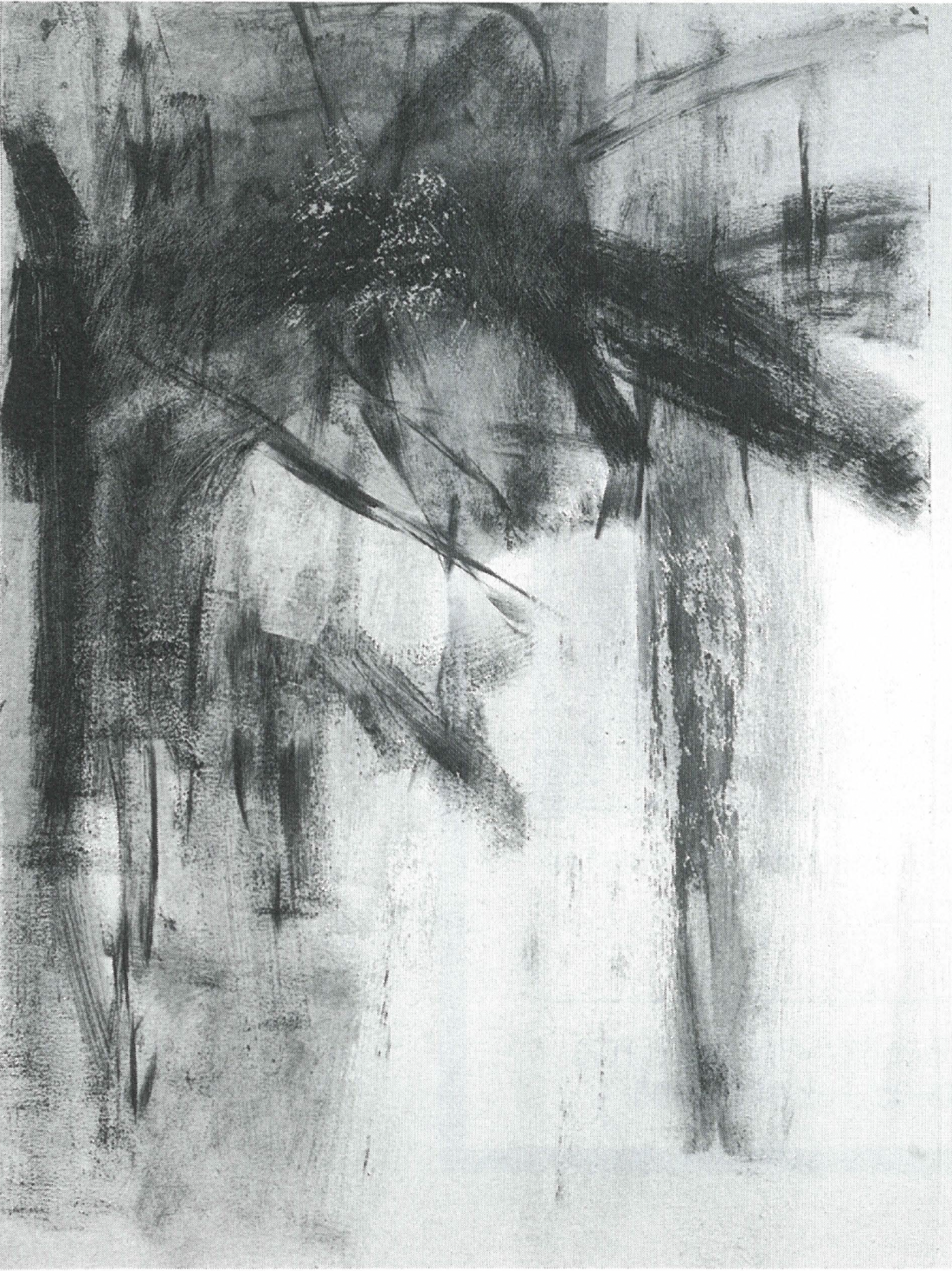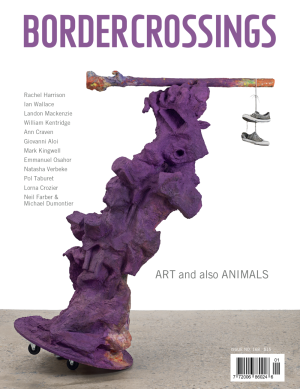The Rings Cycle
While David Rabinowitch is primarily known for his sculpture, an exhibition of his recent drawings at the Peter Blum Gallery in Soho amply demonstrates that he is also a force to be reckoned with in the area of drawing. Of the 41 drawings on exhibit, no mention is made of trees, yet once inside the gallery it is plainly evident that the viewer has entered a sort of interior arboretum, the inner sanctum of a grove. These are not renderings or mere depictions, seeking to trace out the outlines or perspectives of a landscape; lets just say that if trees could accomplish self-portraiture, the results would closely resemble these works.
A text accompanying the exhibition informs us that David Rabinowitch was born in Toronto and has lived and worked in New York since 1972, when he took to regularly visiting Central Park and drawing a beech tree “initially without any purpose in mind.” By 1977, he had amassed a considerable body of work (26 of the pencil, crayon or charcoal drawings date from this period) when he developed—or rather invented—a novel crayon comprised of ground charcoal and beeswax. This, his own device, afforded him the opportunity to expand the breadth of his technique. It provided him with more room to manoeuvre; he could—and did—brush his surfaces with greater fluidity when necessary or inscribe and scuff the paper’s grain to the texture of a branch. The effect is stunning. Clearings emerge beyond rough-hewn foregrounds that read like a cartography of bark, overhung with limbs, boughs and the intimation of foliage.

David Rabinowitch, Untitled, 1993 (#53), beeswax and charcoal on paper, 41 l/2 x 29 1/8”. Courtesy: Peter Blum, New York.
The work from this period, and lasting until 1983, evinces a growing kinship to, yet remaining quite distinct from, sculpture. (I am reminded of a life-drawing class teacher, the sculptor Morton Rosengarten, and his frequent admonitions for us students to “walk around the model. Get an idea of what’s going on here!”) And while I am not familiar with Rabinowitch’s sculptural work—he has been exhibited widely in Europe but relatively little in North America—I am convinced of the separate natures of his two principle preoccupations. During a period marked by major museum exhibitions of his sculptures at the Kunsthalle Tübingen (1987), the Kunsthalle Bielefeld and the Kunstmuseum Düsseldorf (1988), the Kunsthalle Baden-Baden (1992), the Galerie nationale du Jeu de Paume, Paris and the Kunstmuseum Winterthur in Switzerland (1993), a ten-year hiatus in the tree series continued until 1994 when he returned to them as a subJect—this time the elms of Tompkins Square Park in New York. Judging from the 15 drawings selected from his production up to 1997 which round out the show, the previous decade saw him not missing a beat; it’s as if the viewer’s gaze sounds each drawing out like a tuning fork, the ensuing vibration in perfect harmony with its neighbours’ emanations.
David Rabinowitch’s drawings would appear to be the issue of a deep and prolonged reflection into the very essence of what constitutes a tree—of _tree_dom in effect. With this sequence of drawings, he has conducted an extensive delving, as though he had literally bored his way through to the arborean core of a tree, inhabited it awhile, then worked his way back out—layer by massive layer—through the sap and grain of the wood to the surface. I wouldn’t be at all surprised if, were technologies available that could slice through David Rabinowitch’s drawings without doing them damage (and for all I know these resources may very well exist), you could date and trace the evolution of his work merely by counting the exposed rings. ♦
“David Rabinowitch, Recent Drawings” was on exhibition from December 19 to February 20, 1999 at Peter Blum in New York.
Robert McGee is a freelance critic and poet who lives in Brooklyn. He contributes regularly to Border Crossings.

